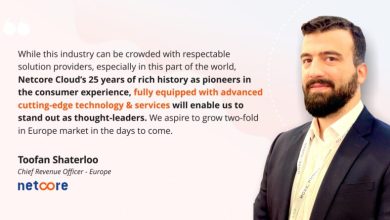Customer Brand Loyalty Figures Reveal 89% of Customers Have Switched to Competitors Because of Bad Experiences

<?xml encoding=”utf-8″ ?????????>
The ability of any firm to put the customer at the core of its operations determines its success. Businesses may establish a harmonious workplace that focuses on surpassing customer expectations by aligning goals, breaking down departmental walls, and promoting cross-functional cooperation.
Join us as we explore the transformational power of alignment and cooperation, unlocking the potential to create customer-centric firms that flourish in a changing environment.
What is a Customer-Centric Organization?
A customer-driven organization will always look after their customers. It focuses on providing a positive experience every time someone interacts with the firm. Companies that focus on their consumers recognise that knowing what their customers want and need is critical to their success. This allows them to surpass expectations, create trust, and form long-term partnerships.
These businesses engage with their consumers freely and solicit input. They do research on client behaviours and preferences in order to tailor their services. They also teach personnel to provide outstanding customer service.
Organizations rely heavily on trust. They keep their commitments truthful and deal with problems as soon as they arise. This fosters trustworthy connections with consumers, especially given that current figures show that 89% of customers have shifted to competition due to bad prior experiences. Innovation is also essential. Companies remain ahead of the curve by improving their goods and services.
How to Build Dedicated Strategies for Customer-Centric Alignment and Collaboration
Clear Communication Channels
Make use of multiple platforms! Emails, instant chat, and project management software may accommodate a wide range of tastes while also increasing accessibility. Establish clear expectations. Response times, preferred channels of communication, and platform usage guidelines will enhance clarity and efficiency.
Encourage comments! Create a culture that values feedback and encourages open dialogue. This will increase transparency and aid in the improvement process. Review communication methods regularly. Check the efficacy of your channels on a regular basis and make adjustments as needed. This will keep them current and relevant.
Remember that communication is more than simply transferring information; it is also about actively listening to and comprehending the opinions of others. Clear communication channels will help to bring your team together and create cooperation and progress.
When applying techniques, keep in mind unique communication styles. Everyone communicates in their own unique manner, thus understanding each team member may aid in tailoring tactics for improved collaboration.
Data Decision Making
Data-driven choices are now required in business. Organizations acquire insights into their operations by analysing this data. To do so, they gather and analyse vast volumes of data in order to identify trends, patterns, and correlations. This reduces guessing and allows businesses to make evidence-based strategic decisions.
Companies now have access to a plethora of data sources, including social media, client databases, and market research studies, thanks to advances in technology. Using analytics technologies, this data may be transformed into useful information that aids decision-making. A store, for example, might analyse sales data to determine which goods are popular and which require improvement. This can help improve inventory management and increase profitability.
Data-driven decision-making also assists businesses in forecasting future trends and staying ahead of the competition. Businesses can estimate consumer behaviour, market demand, and industry trends by reviewing past data and detecting patterns. This allows them to change plans and capitalise on chances. A hotel chain, for example, may utilise booking data to forecast busy seasons and adjust prices appropriately.
Decision-making also improves organisational collaboration. Teams can collaborate to achieve common goals when they have access to correct data. Data sharing promotes openness, accountability, and alignment.
Reward Customer Loyalty
Create a loyalty programme in which clients earn points or prizes for their purchases or interactions with the firm. These points can be exchanged for discounts, free items or services, special deals, or other benefits.
Create VIP tiers or membership levels that provide loyal clients with escalating incentives and privileges. Customers at higher tiers might benefit from exclusive access to new items, priority customer support, personalised suggestions, or invites to VIP events.
Individual client preferences and purchasing history should be used to tailor special offers and discounts. Send personalized emails or notifications to your most loyal clients, offering them exclusive bargains or early access to new products or services.
Run limited-time specials for loyal consumers, offering them exclusive discounts or bundled deals. These incentives may instil a sense of exclusivity in clients and make them feel cherished. On social media sites, recognise and promote loyal consumers by posting their stories, testimonials, or user-generated material. This public acknowledgement can make clients feel appreciated and urge them to stay loyal.
Conclusion
To flourish in today’s competitive business market, organizations must take a customer-centric strategy. To do so, businesses must understand consumer expectations and gather insights through data and analytics. Furthermore, the organizational culture must promote customer-centricity and enable people to provide exceptional experiences.
Technology is critical in understanding clients and developing strong relationships. CRM systems and social media platforms may help businesses better serve their clients.
Communication and teamwork inside the organization are critical. Break down silos and create cross-functional collaboration to ensure that everyone is working towards the same goal: providing outstanding client experiences.
Continuous improvement should also be prioritized. Gather consumer input, track performance indicators, and make the required improvements.




